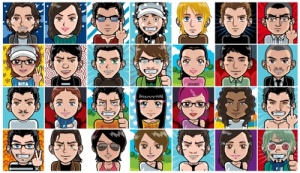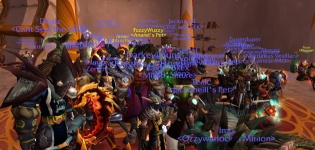Difference between revisions of "Avatar (virtual representation)"
(paragraph revision, minor grammar/spelling edits.) |
m (1 revision) |
(No difference)
| |
Revision as of 01:43, 11 September 2011

An avatar is a representation of an individual within a virtual environment. The purpose of an avatar is to serve as a way for individuals to identify themselves and others within a virtual environment. Individuals become associated with their avatars and the actions and representations of the avatars reflect upon the identities and intentions of the users controlling them. Avatars exist within all types of virtual environments, including but not limited to:
Term Origin and History
Traditionally, an Avatar is an intentional, physical manifestation of a higher being into earthly flesh, as in Hinduism.
The use of the term in reference to a user's manifestation within a virtual environment can be traced back to 1985, when the game Ultima IV made it the goal of the player to become the Avatar, and after which the subsequent games in the series referred to your in-game, on-screen persona as the Avatar, in reference to the fourth game's storyline.
Types of Avatars

There are many different ways to present an Avatar in a virtual community. Some are designed to enhance the representation of a user's personality, and some are more geared towards representing the user's movements and interactions in virtual space.
- Textual - In some virtual environments, the only form of representation is either a textual description of the individual or an online alias like a screen name that entirely encapsulates the user's identity.
- Flat Image - Many online forums (like for example Metafilter and ChiefDelphi FIRST Robotics Forums) and other text-based communities allow users to upload images, either static or animated (GIF) depictions of whatever the user would like others to associate themselves with. These can also be portraits as in more social text-based communities. They encourage users to upload photos of themselves (not necessarily in the traditional portrait style).
- Static character - In many single player games, players manipulate a main player without the option to customize its appearance or its role in the storyline.
- Dynamic character - These are best described as virtual dolls, the appearance of which users can customize to represent themselves or to emulate any emotion or characterization of their choosing. These Avatars can be either simply dynamic visual representations, or mobile, manipulatable "bodies" within a virtual world.
Interaction
Avatars are the way that most games visualize a user's interaction with a virtual world. It is easier and perhaps more natural for a player to manipulate his or her Avatar through a doorway in order to see a new area than it is for said player to select an option or type a request to see that new area.
Avatars help users to immerse themselves within virtual worlds and see themselves walking up to other characters, moving within landscapes, and affecting other elements within the game.
In text based virtual worlds and forums/chat rooms, the 2D images likely can be commented upon. They also help to put a out certain character traits of the user (happy, smart, serious, joking, etc.).
Identity
See also: Online Identity
Avatars are meant to represent the player within the game. They are more than just placeholders for the spatial relations in the game; users are meant to perceive their Avatar's movements (and sometimes their appearance) as the reaction to their own impulses and personality. Although people tend, if they are given the power, to design or choose avatars that closely resemble themselves or what they feel best represents their true self [1], a user may create an avatar that has no resemblance to that user (males creating female avatars and vice versa) for a number of reasons including an escape from reality (an obese person uses a skinny avatar), the ability to blend in with a specific crowd (espionage, group social requirements, etc), or others.
It is often the case that a user's avatar seems to become and be seen as an extension of the user's being. Raph Koster, in devising a declaration of the rights of players in virtual worlds, Koster wrote his "Declaration of the Rights of Avatars" [2]. Additionally, situations in which users are deeply affected by wrongful actions (such as virtual rape and griefing in general) against their avatars serve to demonstrate the synonymic view of users and their avatars we tend to take.
For social, text based forums, chat rooms, and even social networks, they can be used to reveal or conceal a users physical identity.
References
Nowak, K. L., and Rauh, C. (2005) The influence of the avatar on online perceptions of anthropomorphism, androgyny, credibility, homophily, and attraction.
Koster, R. (2000) Declaring the Rights of Players